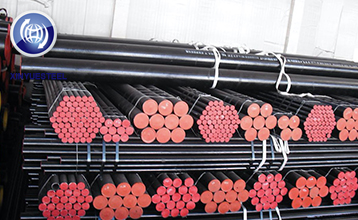China's nickel raw material import source concentration risk is extremely high
Jun. 18, 2020
According to customs statistics and related investigations, after 2010, China imported nickel ore from Indonesia always accounted for more than 70% of Indonesia’s total nickel ore exports, while nickel imports from the Philippines accounted for more than 90% of its total exports. According to data released by the General Administration of Customs of China, in 2019 China imported a total of 56.129 million tons of nickel ore and its concentrate (physical volume), of which 23.940 million tons were imported from Indonesia and 29.937 million tons were imported from the Philippines. The total amount of nickel ores and concentrates imported by China accounted for 95.9% of the total imports of this resource in China.
From the perspective of imported ferronickel, China imported 194.97 million tons of ferronickel in 2019, of which imports from Indonesia were 1.357 million tons, accounting for 69.6% of the country alone.
Judging from the above data, the country of origin of nickel metal resources in my country is extremely concentrated, and nickel resource input basically depends on the Philippines and Indonesia.

From 2020 to 2025, China's nickel metal supply and demand still have gaps
In recent years, China's nearly "crazy" investment in the field of ternary battery materials has driven the market's demand for battery material resources. The ratio of nickel-cobalt-manganese oxide in ternary materials and the relatively low price cost of nickel relative to cobalt have made "decobalization" popular, and nickel has gradually become a "darling" in the battery field.
According to the forecast of foreign mainstream industry organizations, it is expected that by 2025, global nickel consumption will increase by 640,000 tons. Among them, the consumption of nickel for batteries will increase from 58,000 tons in 2018 to 300,000 tons in 2023. The increase in the consumption of nickel for batteries accounts for about 40% of the increase in the demand for nickel. By 2030, of the world's 1.1 million tons of new nickel demand, about 500,000 tons will come from electric vehicles, power batteries and energy storage equipment, and the proportion will further increase to more than 45%. By then, the increase from new energy batteries will exceed that of stainless steel and become the main contributor to the increase in nickel consumption.
China's technological breakthroughs in the use of laterite nickel ore in stainless steel production and the development in the field of new energy batteries in recent years have comprehensively driven the development of laterite nickel ore and traditional nickel sulfide ore-metal nickel and nickel salt production chains. Driven by Chinese factors, the growth of global stainless steel market output and the application of ternary power batteries have driven the increasing demand for nickel. Since 2016, there has been a continuous gap in global nickel supply, and inventories have declined significantly.
Considering the impact of the new coronary pneumonia epidemic on the global economy, China's nickel metal supply shortage in 2020 may be eased due to the decline in stainless steel production, and gradually approach the supply and demand balance, but the long-term trend has not changed. It is estimated that by 2025, China's nickel metal supply gap will remain between 100,000 and 200,000 tons.



